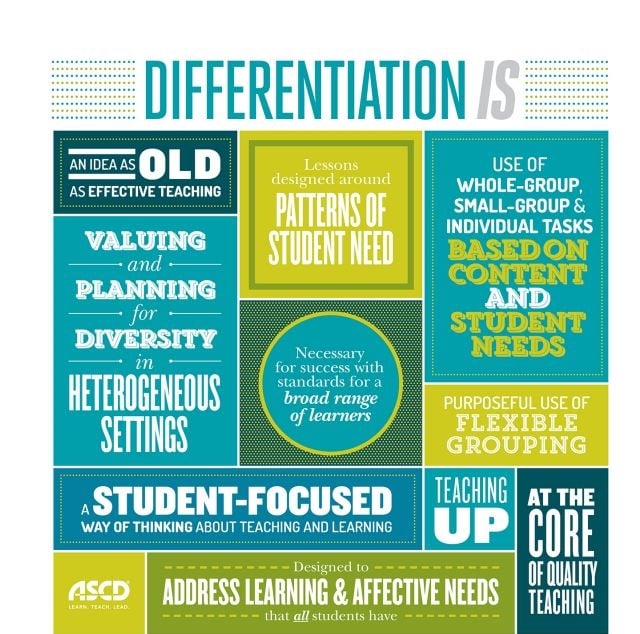By: Margo Ensz on March 4th, 2015
Differentiated, Personalized, Individualized: What's the Difference?
Featured Topics: Differentiated Instruction | Featured Topics: Student Engagement
The education community has an increasingly diverse and vocal channel for discussing best practices, teaching and learning styles, and other hot topics and buzz words. These concepts can quickly become muddled and confusing if not properly defined and discussed. For example, differentiated, individualized, and personalized learning sound like they could be synonymous and interchangeable. However, there are clear distinctions between them. Let's start with differentiated instruction and personalized learning:
 One way to separate them is by thinking about the learning goal. With Differentiated Instruction, the learning goal stays the same classroom-wide, but the method of instruction is adapted to the learning styles of different students. Personalized Learning creates a learing environment that helps students progress through "individual learning objectives at their own pace and preferred learning methods" (source).
One way to separate them is by thinking about the learning goal. With Differentiated Instruction, the learning goal stays the same classroom-wide, but the method of instruction is adapted to the learning styles of different students. Personalized Learning creates a learing environment that helps students progress through "individual learning objectives at their own pace and preferred learning methods" (source).
Another notable difference between the two methods is the teacher's and student's role. Differentiated instruction is largely teacher-driven in that the teacher must plan, develop, and instruct to a specific learning goal but differentiate for optimal student engagement. Personalized learning "involves the student in the creation of learning activities and relies more heavily on a student's personal interests and innate curiosity" (source).
Here are a couple classroom examples from the Wowzers article "How to Know the Difference Between Differentiated Instruction & Personalized Learning"
- Differentiated: If Jane learns best via visual resources, then you should make an effort to meet his/her learning needs by providing visually-stimulating instruction resources.
- Personalized: Maybe Johnny learns best in an individual setting via visual and auditory resources, but he often becomes disinterested during full-class instruction. A personalized learning experience for Johnny may involve allowing him to progress at his own pace, possibly off to the side via an interactive online resource.
Wait, but what about individualized learning?
That's right, there's another. While individualized learning sounds like it could be synonymous with personalized learning, in this case the learning goal remains the same among all students, but the pace at which the student learns and masters a concept varies based on student readiness and learning styles. This learning strategy is "meant to help each student master the skills they will need as defined by established academic standards."
How do they make sense together?
The points of differentiated instruction, personalized learning, and even individualized learning are not mutually exclusive. Often a practice a teacher takes to differentiate a lesson is a first step and function of personalized learning. Understanding the differences and overlap between each teaching and learning method can help teachers While implementing differentiated, personalized, and individualized learning all at once seems like an impossible task, technology can help teachers meaningfully deliver all three methods. This ISTE article from August 2014 concludes:
Check out this article on Visual Learning Technology and Differentiated Instruction for more information, and take a look at this chart, found on TeachThought, further lays out the differences and similarties between these three types of learning.
How do you differentiate, personalize, and/or individualize in your classroom? How do you define the distinction between each teaching style? We'd love to hear from you--leave a comment!


